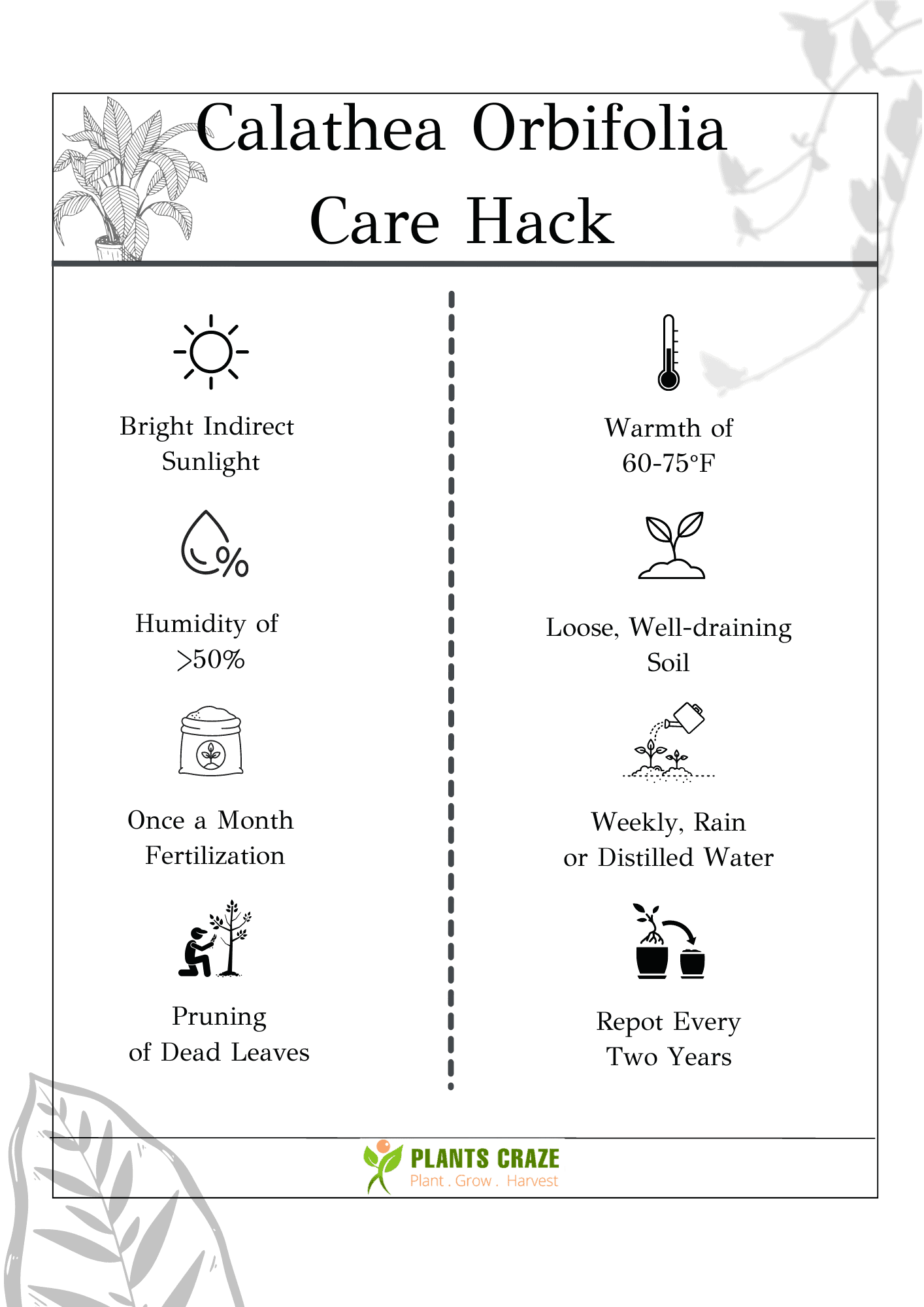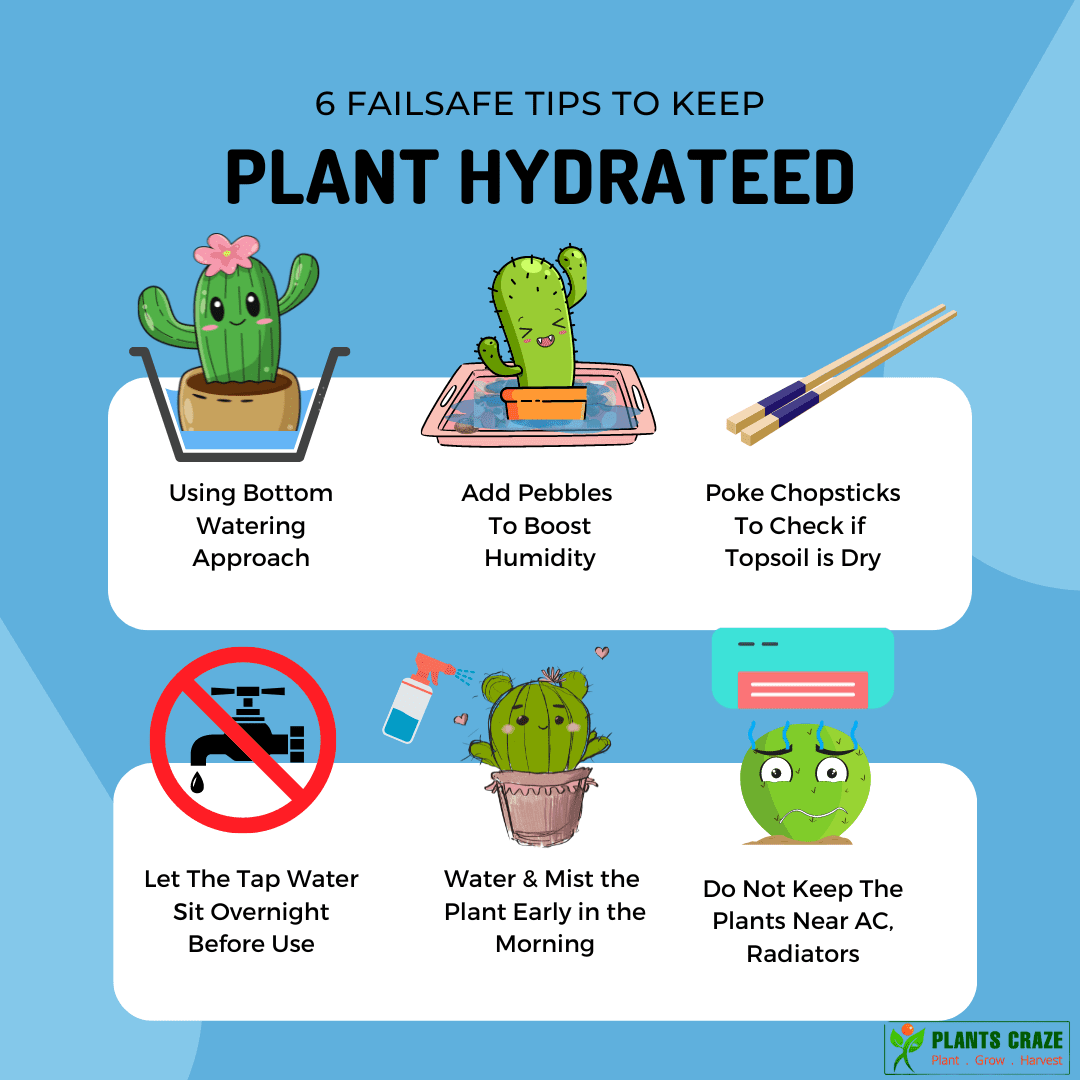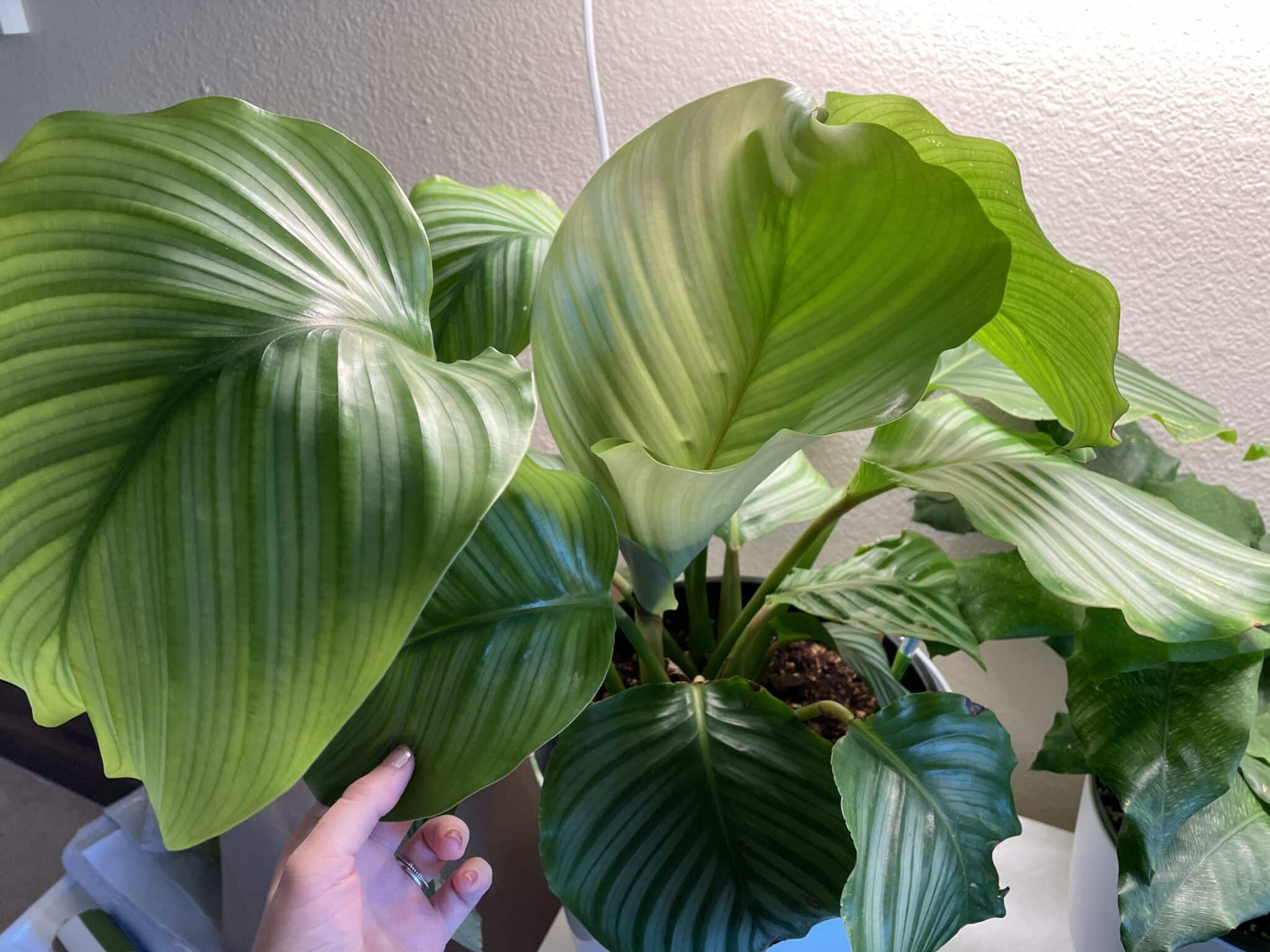The leaves of Calathea orbifolia span up to one foot but can quickly turn yellowish and patchy under improper growing conditions.
Although they do not mind once-in-a-while care mishaps, in the long haul, they lose their vigor with progressive mistreatment. Thus, read on so you know how to keep Calathea orbifolia happy.
Table of Contents Show
Calathea Orbifolia Overview
Popular with the name orbifolia Prayer plant, Calathea orbifolia, native to South America, flaunts its ornamental leaves with silver-green patterns.
It is one of the largest Calatheas but with a moderately slow growth rate. So they take longer than usual to grow tall.
| Characteristics | Descriptions |
|---|---|
| Scientific Name | Calathea orbifolia |
| Family | Marantaceae |
| Ecology | Native Range: South America Life Cycle: Perennial Habit: Herbaceous Habitat: Rainforests USDA Zones: 8 to 11 |
| Height and Spread | 2 feet × 2-3 feet |
| Growth Rate | Moderately Slow |
| Growing Seasons | Spring and Summer |
| Leaf | Color: Light green with silvery-green stripes Shape: Large round leaves Texture: Shiny and Smooth |
| Flowering Periods | Throughout Summer |
| Flowers | White/ Purple |
| Grown For | Ornamental leaves |
| Toxicity | Not toxic to pets and humans |
Calathea Orbifolia Complete Care Guide
Growing Calathea orbifolia can be challenging for newbie gardeners who are not used to growing Calatheas.
But by replicating the natural habitat-like conditions, they can shine and proliferate flawlessly.

Let us delve deeper into the Calathea orbifolia ideal care requirements.
1. Sunlight & Temperature
Orbifolia thrives in warm temperatures of 60°F to 75ºF with daily 4-6 hours of filtered or indirect sunlight.
Also, place them in a shady light spot or a few feet away from the east or north window.
That said, low light and temperature below 55°F can severely push back the growth resulting in stunted, leggy, drooping foliage of Calathea orbifolia.
Move in your outdoor Calathea if you do not live within warmer 8 to 11 USDA zones. Otherwise, utilize frost blankets or heat mats.
Moreover, you can also use artificial grow lights for about 8 hours to keep them upbeat.
2. Water & Humidity
Both over and underwatering and anything below 40% humidity can upset Calathea orbifolia.
Furthermore, incorporate misting now and then in the morning to keep humidity over 50% in summer.
If you fetch them too much water, their root begins to turn yellow and die shortly due to rotting.
Besides that, excess humidity can cause yellowing leaves, wilting and brown leaf tips.

But on the contrary, lack of water and low humidity causes curling, yellowing and wilted leaves with patchy brown leaf edges.
Therefore, to avoid moisture issues, use a bottom-watering approach and place pebbles on the saucer.
Alternatively, place them in a well-lit bathroom or kitchen with plants like Areca palm to facilitate natural humidity.
3. Soil & Fertilizer
Calathea orbifolia loves nutrient-rich, loose potting soil that retains enough moisture while allowing the roots to breathe.
Similarly, give them balanced or nitrous fertilizer every month in the growing season to boost foliage growth.
Meanwhile, feeding them even in winter can cause salt accumulation resulting in chemical burn to roots and stem.
Excess fertilizer can cause brown spots on drooping, wilting leaves of Calathea orbifolia.
Thus, refrain from doing it in winter and always ensure to dilute the fertilizer to its half strength.
You can use organic fertilizers that prevent chemical burns or slow-release ones to be on a safe boat.
4. Potting & Repotting
As Calathea suffers relatively more from overwatering issues, aim to use well-draining pots featuring drain holes.
Give young orbifolia 3-4 inch wide pots and repot them after two years in 6-8 inches pots.
Furthermore, they need repotting as soon as they show signs of rootbound, rot and fungal infections.
In such peril, immediately repot the plant after snipping off damaged parts and applying fungicides.

Also, ensure the container is at least 2″ bigger than the previous one to ensure enough room for roots to grow.
Moreover, you can regularly apply neem oil or clean leaves using soapy water to prevent infection.
Remember, Calathea orbifolia are not fond of frequent repot, so they may appear drooping after repot but will bounce back soon.
5. Seasonal Pruning
Although Calathea orbifolia does not ask for regular pruning, they prefer seasonal pruning of old, damaged parts to focus on new growth.
Furthermore, they need pruning when aphids, mealybugs, whitefly, soil gnats and thrips invade them.
Furthermore, trim Calathea to give them the desired shape, and with controlled pruning, you can make them bushier.
Also, let the drooping or wilting leaves as it is but trim browning or yellowing foliage as they will not recover.
Calathea Orbifolia: All About Growth
Mainly grown for its signature large oval leaves with striking silver and green lining, Calathea orbifolia has a moderate growth rate.

They actively unfurl new leaves in the spring and summer but stay dormant in winter.
Similarly, they are unlikely to bloom indoors but in summer when provided with excellent care.
The unshowy flowers are white or yellow, and many gardeners prefer to snip blooms to focus on foliage growth instead.
Propagation Methods for Calathea Orbifolia
Calathea orbifolia can be propagated via rhizome division in early spring or summer for optimal propagation.
Propagating them in the growing season allows feeder roots to grow further and give out fresh foliage.
Although Calathea can be propagated via seeds but is not the preferred method due to the low success rate with meticulous care.
Now, let us start with the propagation steps of Calathea orbifolia, shall we?
- Gently slide out the plant and loosen the roots using some water.
- Using a sterilized blade, cut a tuber section that includes a rhizome.
- Prepare the potting mix for Calathea in a small pot (4-5″) and immediately repot the division.
- Moisten the potting mix but do not overwater it.
- Place it in a medium, indirect light at a warm temperature.
- Provide enough humidity by covering it with a clear plastic bag on top but remove the cover every other day to let in the fresh air.
- Remove the plastic once you see the new growth, which may take over a month.
Once the legit growth is visible on the rhizomes, you can proceed with regular Calathea orbifolia care.
Toxicity of Calathea Orbifolia
In addition to air-purifying qualities, Calathea orbifolia is a pet-friendly houseplant.
Therefore, you can let your pets run around the plant without worrying about them getting poisoning.
But ingestion can cause minor gastrointestinal upset, so keep them out of pets’ and kids’ reach.
If you have toxic plants like Philodendron and Monstera in the house, here are the helplines to reach out for.
- Pet Poison Helpline: 855-764-7661
- ASPCA Animal Poison Control Center: 888-426-4435
Where to Buy Calathea Orbifolia
Although Calathea orbifolia is a rare species of Calathea, they are relevantly easy to buy thanks to the help of the internet.
Here are some of the verified online retailers with Calathea orbifolia for sale.
| Shops | Expected Shipping Time |
|---|---|
| Etsy | 3 to 7 business days |
| My Home Nature | 5 to 7 days |
| Garden Goods Direct | 3 to 5 business days |
FAQs About Calathea Orbifolia
Why is my Calathea orbifolia drooping or curling?
The leaves start drooping mainly due to underwatering and severely cold temperatures.
However, the leaves move up and down, following the light, so confirm drooping is a sign of being thirsty, not a natural movement.
How do you fix drooping Calathea orbifolia leaves?
Give them plenty to drink and avoid letting the potting soil completely dry. Always ensure soil is slightly moist but not soggy.
Wrapping Up…
Growing Calathea orbifolia is relatively challenging, but they are so imposingly beautiful that all the strenuous efforts seem worth it in the end.
Aim to keep orbifolia happy by adapting a flexible watering routine alongside prompt feeding to enjoy the clean air offered by Calathea.
All The Best!
